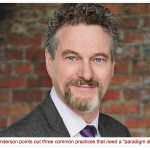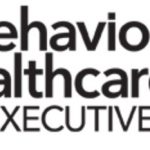The Neuro-Laser Foundation introduces campaign giving teal wristband for every donation supporting research of “revolutionary” new treatment for civilians and veterans with TBI
![]()
Originally published on Newswire.net here
DENVER, Colo. (November 11, 2016) — The researchers at Neuro-Laser Foundation in Denver have identified a revolutionary new treatment for traumatic brain injury, which historically has been untreatable. To help fund further research and treat qualifying veterans, the organization is giving away teal wristbands for every donation made through the “Say Goodbye TBI” campaign on GoFundMe.com.
“We want to give this TBI treatment an identity that people can easily support,” said Drs. Larry Morries and Theodore Henderson, co-founders of Neuro-Laser Foundation and who were featured in televised news coverage recently on CBS-4 in Denver. “Over the last year, we’ve published five studies showing our TBI patients respond really well to the new treatment, and brain functions are being restored. It’s one of the centuries greatest medical breakthroughs.” Dr. Henderson add, “Indeed, if you realize there are over 3 million mild TBI per year in America, you can imagine the huge impact this treatment could provide.”
According to Dr. Morries, even mild TBIs such as concussions, can develop into symptomatic conditions that may be unexplainable to many doctors.
“Patients will complain of headaches, memory loss, mood swings, impulse control and depression and most doctors will give a medication for the symptom that does nothing to solve the problem,” said Dr. Morries. “Mention TBI to most doctors and they will tell you the only treatment is rest and physical rehabilitation.”
While auto accidents, falls and sport injuries cause the most concussions, a high percentage of military veterans also struggle with TBI as well as post-traumatic stress disorder (PTSD).The veterans and first-responders are a special focus of the Neuro-Laser Foundation.
“It can be dangerous to misdiagnose PTSD rather than TBI because they can have similar symptoms, and completely different treatments,” said Dr. Henderson. He co-authored last year’s landmark study that showed how to distinguish between TBI and PTSD, ranking No. 19 of 100 of the Top Discoveries of the Year by Discover Magazine. “The biggest problem is mis-directed pharmaceutical treatments that can do more harm to the damaged brain than good.”
The TBI treatment being studied by Neuro-Laser Foundation is a non-invasive, non-pharmaceutical “neuro-laser” that uses multi-Watt, near-infrared light (NILT) to regenerate the damaged brain cells.
Dr. Henderson defined the “neuro-laser” as a proprietary method that involves transcranial applications of multi-watt NILT to areas of brain injury. The patent-pending treatment penetrates the scalp and skull with no skin irritation to activate numerous brain reparative processes, including the production of brain-derived neurotrophic factor. He draws a distinction between this method and the use of low-power or diode-emission infrared light. “These low-power methods do not penetrate through the skin, let alone get to the injured parts of the brain. They are simply too weak,” Dr. Henderson explained.
Mounting scientific evidence shows patients receiving this NILT treatment are experiencing dramatic improvements in their conditions. In the past year, Dr. Henderson, and fellow neuroscientist and Co-Founder Dr. Larry Morries, have published five related studies in peer-reviewed journals, outlining the efficacy of NILT for TBI patients. The most recent study, “Multi-watt near-infrared light therapy as a neuroregenerative treatment for traumatic brain injury” was published in the Neural Regeneration Research, and is cited in the National Library of Congress (Pubmed).
“One of the fundamental values of our non-profit is to serve veterans who have fought for our freedom,” said Dr. Morries. “Many times, they cannot get appropriate treatment, so we’re raising money to help underwrite their treatment and support the ongoing research.”
For Eric Medina, from Boulder, CO and a disabled U.S. Air Force Veteran, the improvement in his condition can be seen in brain scans, and in his improving cognitive functions. In 1983, Eric received a moderate TBI as the result of a motor vehicle accident while on active duty. He was in a coma for two months and was airlifted from Europe to a rehabilitation facility in California. He had injury to his right temporal lobe and portions of his right frontal cortex which gave him language and speech-related problems, difficulty walking, low moods, irritability, sleep disturbances and recurrent headaches.
“I can really notice the changes in a visceral and intellectual sense. My writing has gotten better, and my reading comprehension is really improving,” Medina said.
“The astonishing changes we saw in both the brain scans, and patients’ behaviors showed our method has sufficient merit to warrant a broader-scope research,” Dr. Henderson said.
More information is available at TBI.care or calling (720) 493-1101.
-end-






You must be logged in to post a comment.